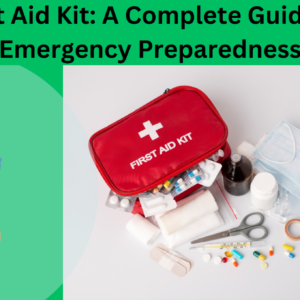Scrub Suite for Physicians and Nurses
Particularly in sterile and surgical settings, the scrub suite is a crucial component of healthcare institutions. This clothing guarantees doctors’ and nurses’ comfort, safety, and hygienic conditions during vital procedures. We’ll go into great detail on the scrub suite’s components, relevance, and appropriate use in this post, emphasizing how important it is to preserving sterility and facilitating effective medical care.
1. Overview
The foundation of infection control in operating rooms and other sterile environments is scrub suites. They serve as a vital line of defense against illnesses and cross-contamination and are more than just outfits.
2. Scrub Suite: What Is It?
A scrub suit is a uniform set of clothes worn in sterile settings by medical personnel, such as physicians and nurses. Usually, it includes:
A shirt with short sleeves and pants
Extra elements like shoe covers, masks, and caps
These suites are specifically made to be comfortable, functional, and hygienic in high-risk locations.
3. Why Scrub Suits Are Used in Healthcare
Scrub suites fulfill several essential purposes:
Preserving Sterility: Lowers the possibility of spreading infections and microorganisms.
Comfort During Prolonged Procedures: Made to be worn for longer periods of time.
Easy Identification: Assists in distinguishing medical personnel from patients or guests.
Scrub suites protect patient and professional safety by reducing contamination.
4. Scrub Suite Types
Disposable vs. Reusable
Scrub suits that are reusable: crafted from long-lasting fabrics, such as blends of cotton and polyester, and are intended to be used often with the right washing.https://amzn.to/42q8do9
Disposable scrub suits are perfect for high-contamination operations because they are made of lightweight, non-woven fabric and are meant to be used only once.
Specialized Scrub Rooms
Certain jobs call for customized scrub suits, such as versions that are flame-resistant or radiation-shielding for particular medical duties.
5. Scrub Suite Components
A full scrub suite consists of:
Shirt: Breathable anhttps://amzn.to/42q8do9d light.
Pants: Adjustable drawstrings and a loose fit.
To stop hair loss, wear a head cap.
Mask: Offers protection against airborne pollutants.
Shoe covers: Help to keep the floor sterile.
6. Considerations for Materials and Design
Scrub suits of today are expertly designed to satisfy the particular requirements of medical settings:
Antimicrobial Fabrics: Stop the growth of microorganisms.
During extended shifts, the wearer is kept dry by the moisture-wicking properties.
Easy-to-Wear Design: Guarantees effortless putting on and taking off.
7. Using Scrub Suits Correctly in Sterile Settings
Scrub rooms are essential in places like neonatal wards, intensive care units, and operating rooms. Strict procedures must be followed by staff members, including washing their hands properly before donning the suits.
8. Putting on a Scrub Suit Rightly
Hands should be thoroughly cleaned.
Make sure the scrub shirt and pants fit snugly but comfortably.
Add extra parts, such as masks and caps.
Before you enter the sterile area, cover your shoes.
9. Scrub Suite Sterility Requirements
Sterility regulations are enforced by healthcare facilities to:
Before using scrub suits, make sure they are thoroughly cleaned.
To prevent cross-contamination, enforce a “clean to dirty” production process.
Limit the use of scrub suits to specified locations.
10. Scrub suite upkeep and cleanliness
Reusable suits must be cleaned and sterilized in an industrial setting using high temperatures.
Medical waste regulations must be followed when disposing of disposable suits.
11. Difficulties with Scrub Suite Use
Comfort and Fit: Scrub suits that are too small can make it difficult to move.
Cost Factors: Costs are increased by frequent replacement or laundry.
Environmental Issue: Medical waste is a result of disposable options.
12. Developments in Scrub Suit Technology
Novel scrub suit designs have been influenced by textile advancements:
Coatings that are antimicrobial
Body temperature-monitoring smart textiles
Eco-friendly, lightweight materials
13. Scrub Suites’ Effect on the Environment
There are environmental issues with the increasing use of throwaway scrub suits. Biodegradable materials and effective recycling procedures are two examples of sustainable practices that hospitals are embracing more and more.
14. The Value of Team Compliance with Scrub Suite Wear
Maintaining sterile environments requires teamwide adherence to scrub suite protocols. Compliance is ensured by frequent audits and training sessions.
15. Conclusion and Prospects
In the healthcare industry, scrub suits are essential for safeguarding both employees and patients. The industry is shifting toward more efficient and sustainable designs as technology develops. Purchasing the right scrub suit procedures guarantees a secure and effective medical setting.
FAQ 1. What is the need for scrub suits in the medical field?
Scrub suites assist in keeping a sanitary atmosphere and reduce the danger of illnesses.
2. Is it possible to customize scrub suits?
While many facilities do permit customization with department logos or names, sterility must not be compromised.
3. Is it preferable to use reusable scrub suits instead of throwaway ones?
The environment determines this. Disposables work best in situations with heavy contamination; however, reusable suits are more economical and environmentally beneficial.
4. How frequently ought scrubs to be changed?
Reusable scrub suits should be changed after considerable use or if damaged; disposable scrub suits are meant to be used just once.
5. What supplies do scrub suits use?
Cotton blends, non-woven textiles, and antimicrobial textiles are examples of common materials.






Reviews
There are no reviews yet.